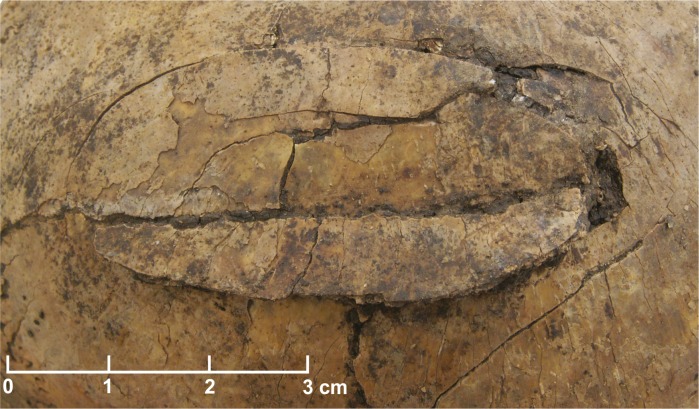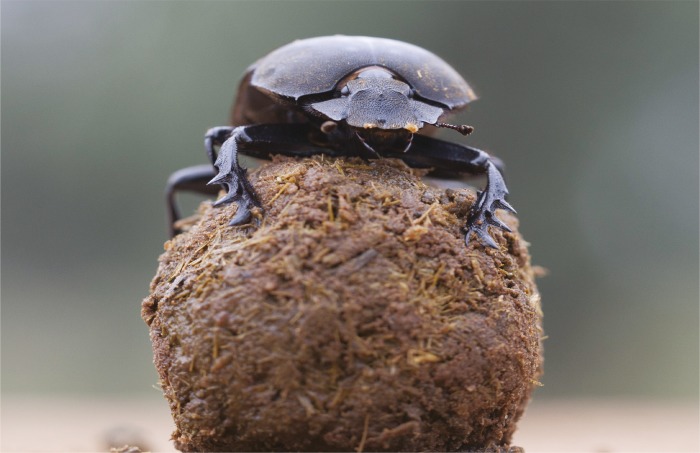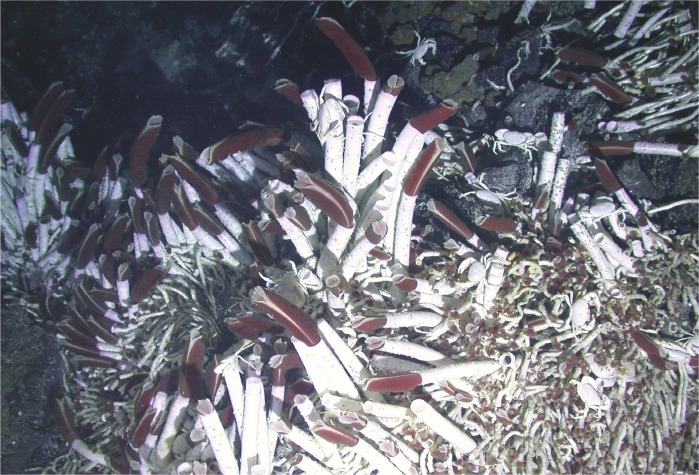Early Neolithic massacre
Cranial fracture in a child 3–5 years old from the Neolithic mass grave of Schöneck-Kilianstädten, Germany.
The role of mass violence during the population peak and decline of the Early Neolithic Linearbandkeramik (LBK) culture in central Europe has been the subject of debate, but only a limited number of archaeological sites provide evidence of such violence. Christian Meyer et al. (pp. 11217–11222) report findings from a new LBK mass grave at Schöneck-Kilianstädten in Germany that was discovered in 2006. The grave contained the remains of at least 26 individuals, buried without any aspects of the care expected for a ritual burial. Consistent with other known Neolithic massacre sites, most of the cranial bones showed evidence of blunt-force trauma, and the presence of arrowheads suggested likely arrow injuries. Unique to the new site was evidence of deliberate and systematic smashing of the lower leg bones of a number of individuals, suggesting that the victims may have been tortured before or mutilated after death. Together with evidence from other LBK mass graves, the findings provide further support for a pattern of large-scale mass violence during the later phases of the LBK, according to the authors. — B.D.
Excess mitochondrial calcium in heart failure
Recolored transmission electron micrograph of cardiac tissue following myocardial infarction.
Though heart failure is a leading cause of death in developed countries, its molecular causes remain unclear. Gaetano Santulli et al. (pp. 11389–11394) found that calcium leak from the sarcoplasmic reticulum (SR)—the organelle in muscle fibers that stores and releases calcium ions—is associated with mitochondrial dysfunction in heart failure. Previous studies that evaluated the role of mitochondrial calcium in heart failure have yielded conflicting results. To investigate whether calcium accumulation in the mitochondria plays a role in heart failure, the authors used mouse models of heart failure with mutations in the two major types of cardiac calcium release channels—type 2 ryanodine receptors (RyR2s) and type 2 inositol 1,4,5-trisphosphate receptors (IP3R2s). In mice with RyR2 mutations that led to SR calcium leaks, calcium accumulated in mitochondria, causing the organelles to become dysmorphic and dysfunctional and leading to the production of reactive oxygen species. In contrast, loss of IP3R2s in mouse hearts had no major effect on mitochondrial function and heart failure. The study suggests that leakage of calcium from the SR via RyR2, but not IP3R2, channels plays a critical role in mitochondrial calcium overload and dysfunction in heart failure, according to the authors. — S.R.
Visual orientation in dung beetles
South African dung beetle (Scarabaeus lamarcki).
South African dung beetles, which sequester small balls of dung for food and breeding chambers, use celestial visual cues to roll dung along a straight line. Basil el Jundi et al. (pp. 11395–11400) performed field experiments and electrophysiological recordings of the beetles’ brain cells to determine whether diurnal and nocturnal species of dung beetles use similar orientation cues and to uncover the neural basis of cue preference. During the day, both species used the sun as a compass. But at night, when the polarized light of the moon is at least a million-fold dimmer than that of the sun, the diurnal species used the moon as a compass, whereas the nocturnal species relied on the polarization pattern of moonlight, rather than the moon itself, as the main celestial cue for straight-line orientation. Single cell analysis revealed that a network of cells in a brain region called the central complex encodes cue preference in both species, and the patterns of neural encoding of cues mirrored the beetles’ behavior in field experiments. Central complex neurons were exclusively attuned to the sun in the diurnal species but switched between the sun and polarized moonlight in the nocturnal species. According to the authors, the flexibility of neural encoding of cue preference in dung beetles enables precise visual orientation under varying light intensities. — P.N.
Efficiency of biomedical research
Mark O. Hatfield Clinical Research Center at NIH. Image courtesy of NIH.
Public funds currently support most biomedical research in the United States. However, the payoff from this investment in terms of improved health outcomes has not been studied. Anthony Bowen and Arturo Casadevall (pp. 11335–11340) analyzed the relationships between the National Institutes of Health (NIH) budget, the numbers of scientific publications and published authors, the number of New Molecular Entities (NMEs) approved by the Food and Drug Administration, and US life expectancy at birth since 1965. The authors found that research outputs, as measured by the numbers of publications and published authors, correlate with NIH funding, but health outcomes, as measured by the number of NMEs and life expectancy, do not correlate with NIH funding. Furthermore, both life expectancy and NMEs per unit of funding have decreased or remained constant since 1965, as have life expectancy and NMEs per publication. The authors suggest several factors that may contribute to the growing disparity between funding and outcomes, including increased difficulty of research questions, increased specialization, and overemphasis on publication in high-impact journals. According to the authors, increased disparity between funding and outcomes may undermine public confidence in science and potentially affect future research funding and public health. — B.D.
Endosymbiont escape from tubeworms
Tubeworms at deep-sea vent 4 years after a volcanic eruption.
The giant tubeworm Riftia pachyptila is nourished by a bacterial endosymbiont, which is acquired by each new generation of worm larvae. Maintaining this arrangement requires the symbionts to be able to escape from their hosts and replenish the free-living bacterial population, but such escape has not been demonstrated. Julia Klose et al. (pp. 11300–11305) observed bacterial release from dead tubeworm tissue under simulated deep-sea and hydrothermal vent conditions in the laboratory, suggesting that bacterial escape occurs upon host death. The escaped bacteria settled on surfaces where they proliferated. The authors estimate that the death of a single tubeworm clump could release several million to more than 1 billion bacteria into the environment. The authors also monitored turnover of tubeworm clumps at a hydrothermal vent field in the North Pacific following a volcanic eruption. The clumps exhibited rapid turnover, with pioneer species being replaced within 2–4 years, suggesting that large numbers of bacteria could be released over a relatively short time. According to the authors, links between host-associated and free-living bacterial populations might explain how the symbiotic relationship between tubeworms and bacteria has remained stable over evolutionary time scales. — B.D.
How to teach critical thinking
The ability to think critically about scientific data and models is a crucial skill and an important goal of education. N. G. Holmes et al. (pp. 11199–11204) developed a framework for learning quantitative critical thinking, consisting of cycles of decision-making based on comparisons between datasets or data and models. The authors applied the learning structure to 130 students in an introductory physics lab course. As the students worked through simple physics experiments, they were given explicit instructions to compare new data to existing data or models and to decide how to act on the comparisons based on statistical tests. After the instructions were removed, the students were 12 times more likely to make or propose changes to improve their data or methods than a control group of 130 students who had taken the course the previous year. The students in the experimental group were also four times more likely to identify and explain a limitation of a model using their data, compared with the control group. The differences between the two groups persisted in another lab course the following year, suggesting a long-term improvement in critical thinking skills. The learning framework may have led to a significant and sustained improvement in students’ critical thinking behaviors, and the authors suggest that the framework could be adapted to a range of settings. — S.R.







